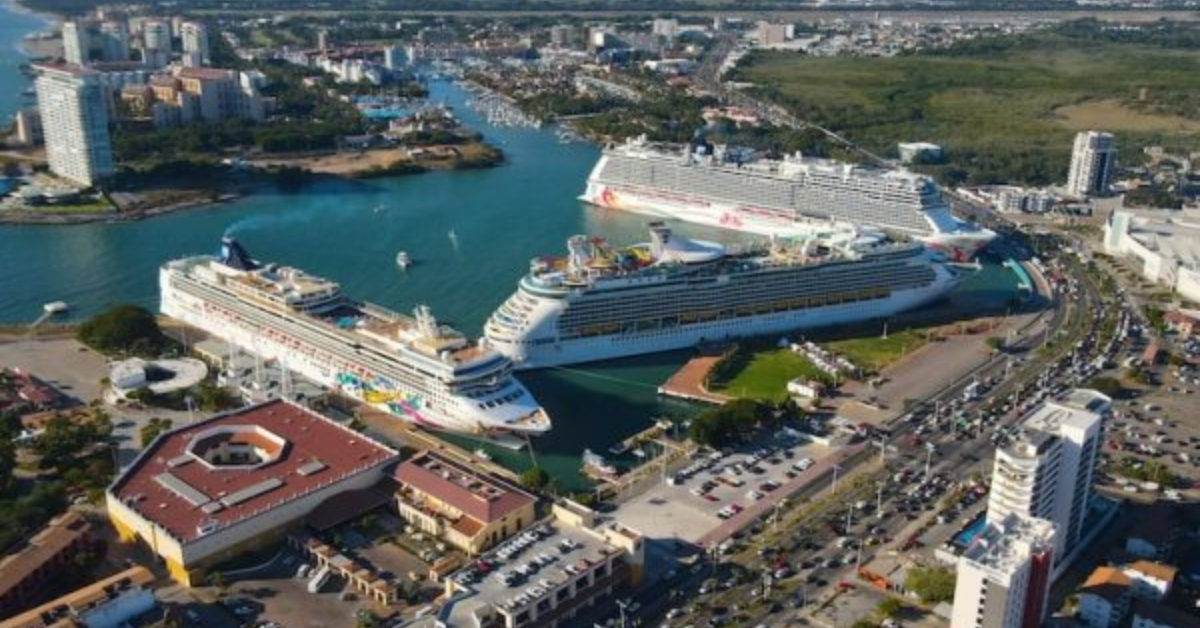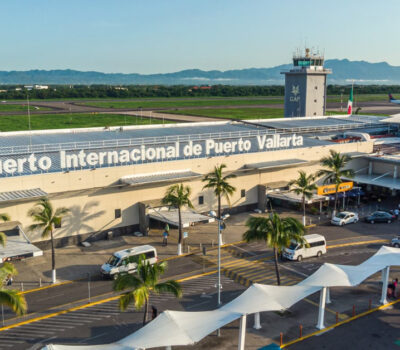Puerto Vallarta, Mexico – In a move aimed at invigorating the tourism sector, the Ministry of Finance and Public Credit (SHCP) has announced a 100% tax incentive for cruise ship visitors entering Mexico. The measure, published in the Official Gazette of the Federation (DOF), temporarily exempts foreign passengers from paying the standard fee of 860.56 pesos during the first half of the year.
The tax incentive, effective from January to June, applies exclusively to tourists arriving by sea aboard cruise ships. This initiative aims to encourage maritime tourism by reducing entry costs and facilitating smoother access to Mexico’s ports.
“A tax incentive is granted to foreign passengers entering the national territory by sea aboard cruise ships who must pay the fee for the reception, study of the application and, where appropriate, the issuance of the immigration document that certifies the status of Visitor without permission to carry out remunerated activities,” the DOF stated.
This decision comes in response to growing concerns within the tourism industry regarding the financial burden placed on visitors and the potential economic impact on port communities. The SHCP underlined the importance of enhancing Mexico’s appeal as a global tourist destination by implementing measures that promote sustainable development and strengthen local economies.
The suspension of the cruise tax is expected to benefit key ports and tourism hotspots such as Cozumel, Mahahual, Puerto Vallarta, Ensenada, and Cabo San Lucas, where approximately 90% of Mexico’s cruise activity is concentrated. These destinations heavily rely on the influx of tourists arriving via cruise ships, and the incentive is projected to provide much-needed support to small and medium-sized businesses operating in the tourism sector.
However, the temporary nature of the measure highlights ongoing debates surrounding long-term taxation policies for the maritime tourism industry. The Congress of the Union recently approved a reform to Article 8, Section 1, which mandates the 860.56 peso fee for tourists entering Mexico by sea. This reform raised concerns among industry stakeholders, who warned of potential negative repercussions on local economies.
Octavio de la Torre, president of the Confederation of National Chambers of Commerce, Services and Tourism (Concanaco Servytur), emphasized the significance of the tax exemption. “It will directly affect small and medium-sized businesses that depend on tourism, especially in places like Cozumel, Mahahual, Puerto Vallarta, Ensenada, and Cabo San Lucas,” he said.
De la Torre highlighted that the exemption could mitigate the economic strain felt by businesses in coastal areas, fostering growth and preserving jobs in regions heavily dependent on tourism revenue.
As Mexico seeks to solidify its position as a leading international tourist destination, the SHCP’s initiative underscores the government’s commitment to balancing fiscal policies with economic growth objectives. The tax suspension reflects a broader strategy to rejuvenate the tourism sector and attract a larger number of international visitors.
Tourism remains a cornerstone of Mexico’s economy, contributing significantly to GDP and employment. Industry experts believe that initiatives like this, coupled with infrastructure improvements and enhanced port services, will ensure Mexico remains competitive in the global cruise market.
For the thousands of passengers disembarking at Mexico’s ports over the next six months, the suspension of the cruise tax is a welcome relief. As stakeholders assess the impact of this measure, the broader conversation regarding sustainable tourism and equitable taxation continues to evolve.
Puerto Vallarta, Mexico - In a move aimed at invigorating the tourism sector, the Ministry of Finance and Public Credit (SHCP) has announced a 100% tax incentive for cruise ship visitors entering Mexico. The measure, published in the Official Gazette of the Federation (DOF), temporarily exempts foreign passengers from paying the standard fee of 860.56 pesos during the first half of the year.












